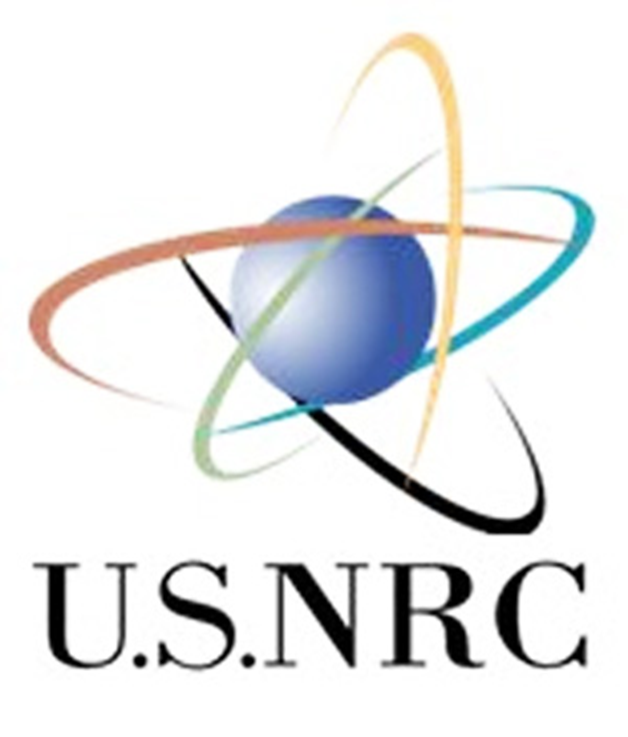Taiwan currently has one nuclear power plant with two nuclear power reactors in operation. In 2015, they closed three reactors. Work had begun on a new nuclear plant called the Fourth National Nuclear Plant in 1999 but a series of construction problems and political opposition halted construction several times. One reactor was finished but sealed after safety inspections. The construction of a second reactor was stopped.
Hou You-yi is the mayor of New Taipei City. He is currently running as the Chinese Nationalist Party (KMT) candidate to be the president of Taiwan. Environmental groups challenged the candidacy of Hou yesterday because they said that the energy platform of his party contains no feasible plan to deal with spent nuclear fuel rods.
Former vice premier Woody Duh accompanied Hou as he presented the national energy platform for the party which is running him for president. Hou said that Taiwan’s transition to renewable energy would necessitate reactivating two decommissioned nuclear power plants. He also said that the decision to halt construction of the Fourth Nuclear Power Plant in New Taipei City’s Gongliao District would need to be reviewed. The key to reducing carbon emissions by Taiwan is to cut down on burning fossil fuels according to Hou.
Hou said that if he were elected president, he would conduct maintenance and safety inspection of the two decommissioned nuclear power plants to see if it would be practical to extend their lifespan. He also said that he would get experts to assess the possibility of restarting work on the Gongliao plant. The two major goals of Hou’s green energy platform are a “low-carbon Taiwan” by 2035, a “zero-coal Taiwan” by 2040 and a “net zero Taiwan” by 2050.
However, the Green Citizens’ Action Alliance and other environmental activist groups said that Hou and the KMT have never offered a solution for handling and disposing of spent nuclear fuel rods. It was claimed that Hou and the KMT are trying to deceive the public into believing that nuclear energy is a “miracle cure” that can solve the nation’s energy problems.
Tsui Shu-hsin is the alliance secretary-general. She said, “As the KMT’s presidential candidate, Hou cannot evade these critical questions, including how to ensure nuclear plants operate safely, how to treat the spent fuel rods, where to store the nuclear waste and other pivotal issues. Their thinking is to reduce natural gas, replacing it with nuclear power to achieve green energy goals. In doing so, they are ignoring the long-standing problems, including Taiwan’s frequent earthquakes and operational safety issues, and there is no space for nuclear waste storage.”
Tsui went on to say that if Taiwan’s decommissioned nuclear power plants were restarted, the rate of mechanical failures and breakdowns would be much higher than in the past. She added that it was possible that the old plants could not pass safety inspections.
Hou also wants to review and restart the Fourth Nuclear Power Plant, which would be a step backward. Tsui asked if “we are going to waste another 10 years on its construction, and throw another NT$50 billion [US$1.57 billion] down this bottom-less pit?”
Blog
-

Nuclear Reactors 1253 – Taiwan Chinese Nationalist Party Would Like To Restart Decommissioned Nuclear Power Reactors
-
Links for 21 Jul 2023
French grid manager: Nuclear alone not enough for carbon neutrality euractiv.com
Japanese premier suggests to China joint expert group on nuclear waste aa.com.tr
UN Urges Nuclear Test Ban Amid Global Mistrust Surge miragenews.com
Fed Board Meets in ID to Discuss Nuclear Waste Storage publicnewsservice.org
-
Links for 20 Jul 2023
Japan Warns Citizens of Harassment in China Over Nuclear Wastewater Backlash time.com
Kim Jong Un promises nuclear weapon deployment to navy in visit to HQ nknews.com
Van Buren County holds virtual meeting on impact of Palisades Nuclear Power Plant closure wsbt.com
Iran Unveils New Nuclear Achievement tasnimnews.com
-

Nuclear Reactors 1252 – Nuclear Industry Group Calls For Action On Regulations For Small Nuclear Reactors
The Breakthrough Institute, Clean Air Task Force, ClearPath, Nuclear Innovation Alliance, and Third Way have joined together to issue a statement that says that delays in finalizing a regulatory rulemaking on risk-informed emergency preparedness has already caused significant regulatory uncertainty for developers.
The proposed rulemaking is detailed in a document titled Emergency Preparedness Requirements for Small Modular Reactors and Other New Technologies. It would amend the U.S. regulations to add new emergency preparedness requirements for small modular reactors (SMRs) and other new technologies such as non-light-water reactor. It would also enable emergency plannings zones fore such reactors to be scalable to take into account their smaller size, lower power densities and lower probability of severe accidents.
The proposed rule was published for public comment in May 2020. The comment period ended in September of that year. The final rule package was submitted to the NRC commissioners for approval in January of 2022.
The five pro-nuclear groups say in a joint letter to the US regulator that “Commissioners are generally expected to vote on final rules in 60 days, but in this case the final rule publication date has been extended multiple times without explanation. Currently, the NRC rulemaking page says the final rule is scheduled for publication on 3 January, 2024. If this timeline holds, it would mean a duration of over 2 years since the final rule was submitted to the Commission for approval. This is in stark contrast to the NRC’s Efficiency principle of good regulation which states ‘Regulatory decisions should be made without undue delay’.”
The extensive delay is causing regulatory uncertainty for developers who are preparing licensing applications according to the group. Until a final decision is made, future applicants find themselves faced with the prospect of preparing two emergency preparedness. One plan would be based on the assumption that the rule will be in effect when they submit their applications. Another contingency plan would be drawn up in case the rule is not yet finished.
This uncertainty has already resulted in applicants changing their emergency preparedness approach during the pre-application engagement process. Some delayed pre-application engagement until there is a greater certainty around what procedures will be available. It creates an extra burden for NRC staff, reduces the value of pre-application engagement for applicants and the NRC. The situation discourages future applicants. It is also contrary to the Nuclear Energy Innovation and Modernization Act of 2019. This bill directed the NRC to develop and implement strategies for the increasing use of risk-informed and performance-based licensing processes within two years. The groups said, “The NRC is over two and a half years late on this statutory deadline.”
“A decision on the final emergency preparedness rule would increase regulatory predictability, reduce the regulatory burden for the applicant and the staff, and align with Congressional direction. More efficient and effective licensing contributes to meeting national environmental and energy security objectives. The Commission should act expeditiously to approve the final rule and update the associated Regulatory Guide 4.7, in the public interest.” -

Nuclear Reactors 1251 – Cameco And Brookfield Business Partners Seek To Acquire Westhinghouse
The U.K.’s Competition and Markets Authority (CMA) has invited comments on the propose Cameco and Brookfields Renewable Partners acquisition of Westinghouse Electric Company. The CMS is considering whether the deal “may be expected to result in a substantial lessening of competition in the United Kingdom.”
In a statement posted on its website, the CMA said that for the next two weeks, until the 16th of August, it is running an “Invitation to Comment” on the purchase. It was “considering whether it is, or may be the case, that this transaction, if carried into effect, will result in the creation of a relevant merger situation under the merger provisions of the Enterprise Act 2002 and, if so, whether the creation of that situation may be expected to result, in a substantial lessening of competition within any market or markets in the United Kingdom for goods or services. To assist it with this assessment, the CMA invites comments on the transaction from any interested party.”
Cameco said that this was part of the standard regulatory approval process for such transactions. It expects to close the deal by the end of this year.
The proposed deal was unveiled in October of 2022. It calls for a strategic partnership of Cameco and Brookfield Partners to acquire Westinghouse for a total enterprise value of eight billion dollars. It would allocate fourty-nine percent of Westinghouse ownership to Cameco and fifty one percent ownership to Brookfield Renewable and its institutional partners.
Westinghouse is one of the world’s biggest nuclear services businesses. It can trace its energy industry roots back more than one hundred years. Brookfield Business Partners acquired Westinghouse out of bankruptcy in 2018. Today, Westinghouse has four key business lines. These include providing services for outages and maintenance, engineering solutions and replacement components and parts; long-term contracting for the manufacture and installation of fuel assemblies and ancillary equipment for light-water reactors; designing, engineering and supporting the development of new nuclear reactors; and providing environmental services which support nuclear sustainability, environmental stewardship and remediation. It is the original equipment manufacturer for around half of the world’s nuclear power plants.
Canada’s Cameco is one of the biggest global providers of uranium fuel “with interests in tier-one mining and milling operations that have the licensed capacity to produce more than 30 million pounds (our share) of uranium concentrates annually, backed by more than 469 million pounds (our share) of proven and probable mineral reserves. We are also a leading supplier of uranium refining, conversion and fuel manufacturing services”.
Cameco’s second quarter financial results were released on Wednesday. Tim Gitzel is the CEO and President of Cameco. He said, “We are invested across the nuclear fuel cycle, and are looking forward to closing the Westinghouse acquisition with our partner Brookfield Renewable Partners, which we expect will occur later this year. We will continue to do what we said we would do, executing on our strategy, and, consistent with our values, we will do so in a manner we believe will make our business sustainable over the long-term.” -
Links for 18 Jul 2023
Georgia nuclear plant can start loading fuel into second new reactor finance.yahoo.com
Strengthening Safety at Nuclear Fuel Cycle Facilities iaea.org
North Korea’s Kim displays nuclear-capable missiles, drones at parade Aljazeera.com
Australian Prime Minister Confident US Will Deliver Nuclear-Powered Submarines coanews.com
-

Nuclear Reactors 1250 – TerraPower Signs Contracts With Four Suppliers For It Natrium Demonstration Reactor
TerraPower has selected four companies to contract for supply services and equipment for their Natrium reactor demonstration project being developed in Kemmerer, Wyoming.
The Natrium demonstration plant project features a three hundred and forty-five megawatt sodium-cooled fast reactor with an energy storage system based on molten sodium-salt. This storage technology can temporarily boost the system’s output to five hundred megawatts when needed. This enables the plant to follow daily electrical load changes. It also integrates seamlessly with fluctuating renewable resources.
In November of 2021, Kemmerer was chosen as the preferred site for the demonstration project. The location is near the Naughton coal power plant. The old coal plant is due to be retired in 2025. It was selected after an extensive evaluation process and meetings with community members and leaders.
TerraPower is a company that is largely funded by Microsoft founder Bill Gates. It has now chosen four suppliers to support the Natrium demonstration project.
Western Services Corporation (WSC) has been contracted to provide the software platform and engineering services for the Natrium engineering simulator. TerraPower is developing the simulator to simulate normal operation and plant protective functions. WCS will provide services critical to its development.
James Fisher Technologies (JFT) will design and construct an injection casting furnace system that will be implemented in TerraPower’s Everett laboratory. It will demonstrate the basic functionality of the injection casting process.
BWXT Canada Limited will design the intermediate heat exchanger for the Natrium demonstration project. This is a critical component which transfers heat from the primary sodium in the primary heat transport system to the intermediate sodium in the intermediate heat transport system.
Curtiss-Wright Flow Control Service LLC (CWFCS) will develop the reactor protection system (RPS) for the demonstration project. The RPS will perform important safety functions in accordance with regulatory requirements. TerraPower said that this contract follows a phased approach including provisions of a prototype system, as well as, planning and engineering support. This will take place prior to the detailed design, manufacture, testing and delivery of the RPS.
Tara Neider is the Senior Vice President and Project Director for the Natrium Reactor Demonstration Project. She said, “Throughout the process of bringing the Natrium Reactor and Energy Storage System to market, we have found that working with a diverse supply chain strengthens our ability to deliver a cutting-edge technology. The commercialization of advanced reactors relies on the support of experts from various industries, and we look forward to collaborating with these suppliers to build the Natrium reactor.”
TerraPower noted the process of awarding contracts for the project was ongoing. It will continue to provide updates as additional contracts are awarded.
Last December, TerraPower stated that it expected operation of the Natrium demonstration reactor to be delayed by at least two years. The reason for the delay is that there will not be sufficient commercial capacity to manufacture high-assay, low-enriched uranium (HALEU) fuel in time to mee the proposed 2028 in-service date.
However, last month TerraPower and Centrus Energy Corporation signed a Memorandum of Understanding (MoU) to significantly expand their collaboration aimed at establishing commercial scale, U.S. production capabilities for HALEU to supply TerraPower’s novel Natrium reactor and energy storage system. -
Links for 17 Jul 2023
Framatome EATF completes first cycle in US reactor world-nuclear-news.org
No new nuclear facilities along vulnerable coasts, Alaska regulators say alaskapublic.org
Zimbabwe and Ethiopia sign nuclear energy cooperation agreements with Russia world-nuclear-news.org
Eleventh Japanese reactor resumes operation world-nuclear-news.org
